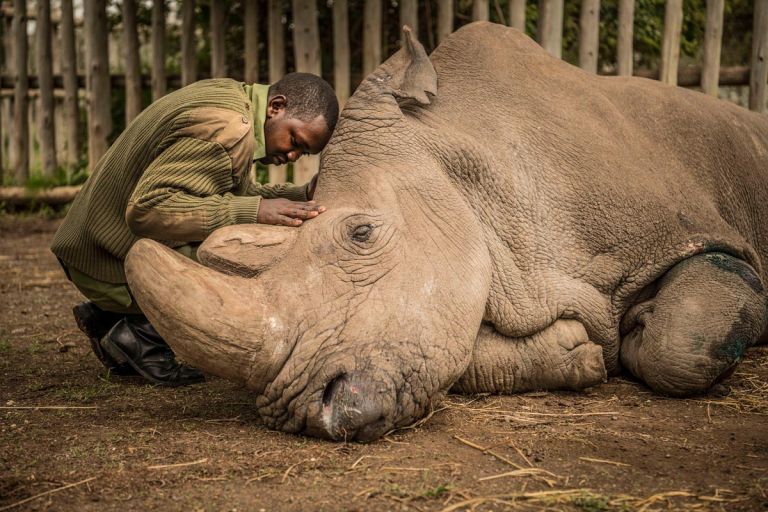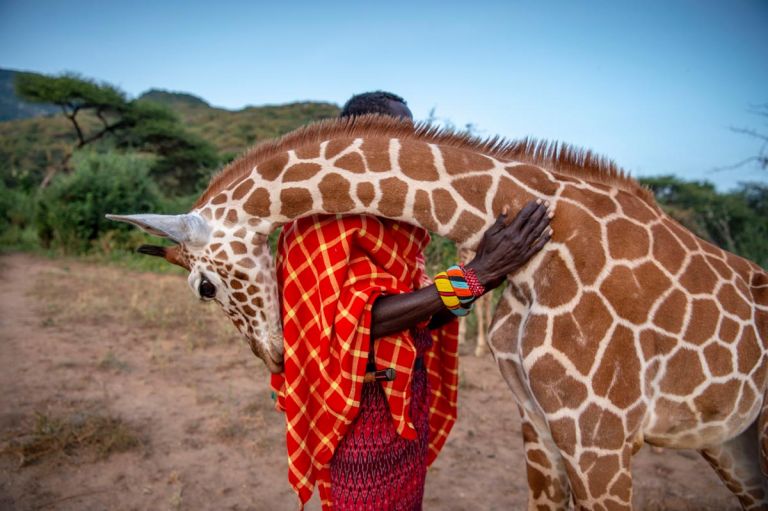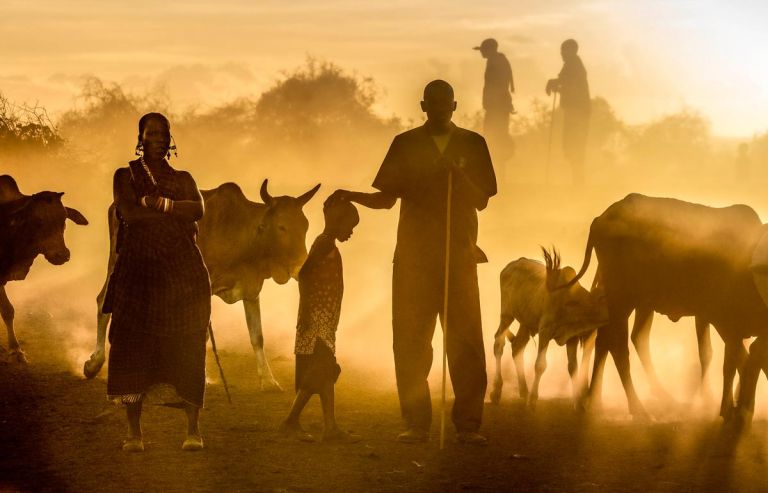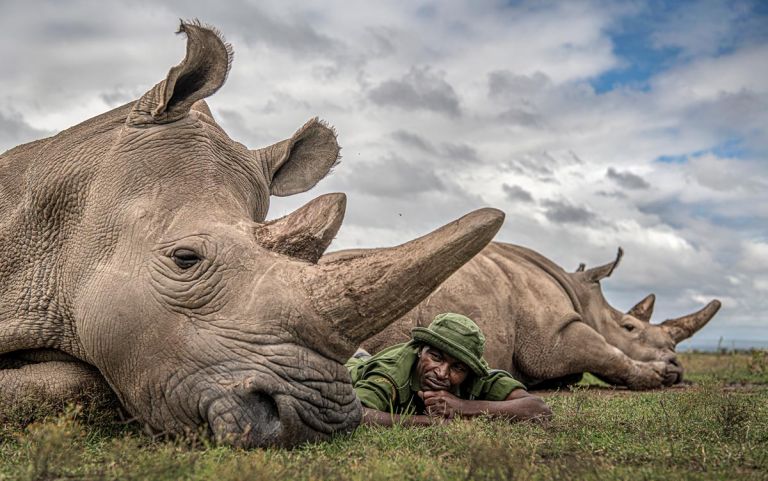This pandemic is a reminder of how deeply interconnected our world is. When wildlife and habitats are destroyed, it creates opportunities for viruses to cross from one species to another; from animals to humans. This is an urgent moment, for us to reexamine our relationships, not only to each other but also to our natural world.
For the past decade, I have been following stories of the silent extinction of species and searching for solutions to our planet‘s most pressing environmental challenges. March 19th marked two years since the passing of the last living male northern white rhino on the planet, Sudan. What began as a story about the end of a species has evolved into a profound story of individuals changing the destiny of our planet. In a beautiful twist of fate, the image of Joseph Wachira saying goodbye to Sudan, an image documenting extinction, is the beginning of something powerful, something hopeful. Today, a consortium of scientists are creating embryos to bring this species back from extinction.
I have been working with communities throughout northern Kenya for the past ten years, watching how resilient nature is when we give it a chance. These stories have become blueprints for other places sharing the same difficult environmental challenges. I am seeking funding to continue telling some of the hopeful stories like the revival of the northern white rhino and the communities coming together to protect wildlife and their fragile habitats.
Without rhinos and elephants and other wildlife, we suffer more than just a decline in the health of the ecosystem of which we ourselves are a part. We and future generations suffer a loss of imagination, a loss of wonder, a loss of beautiful possibilities. Planet Earth is the only home we have. What happens next is in all of our hands. When we see ourselves as part of the landscape and part of nature, then we recognize that saving nature is really about saving ourselves.




